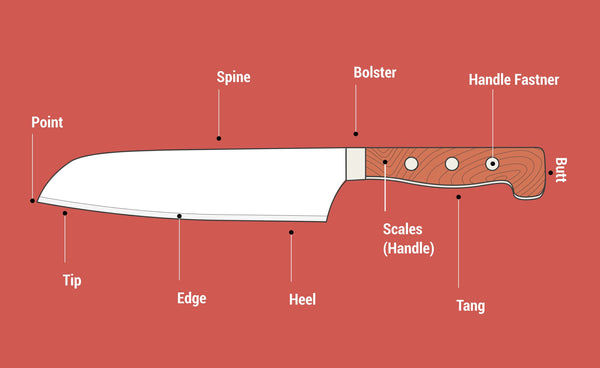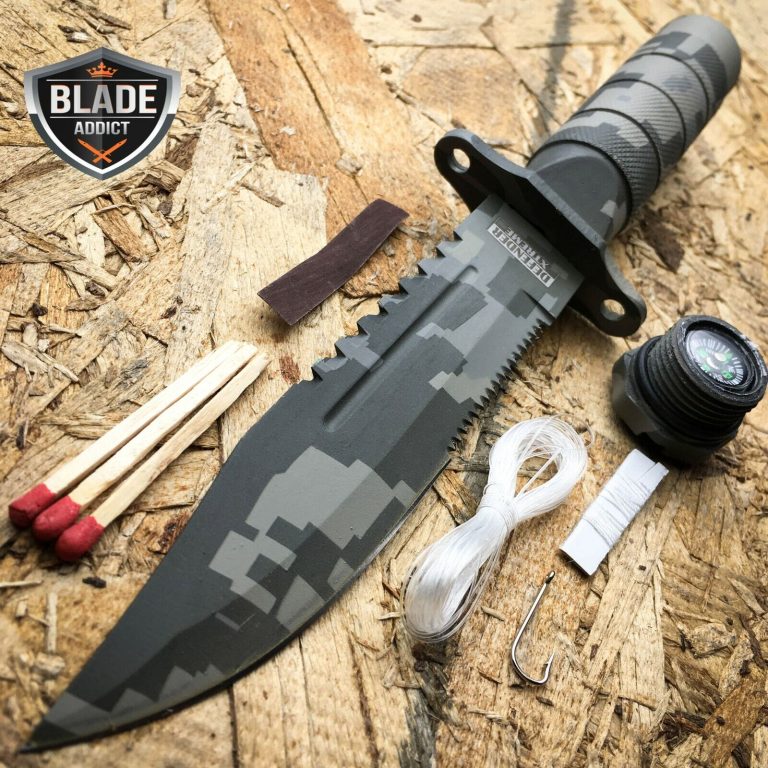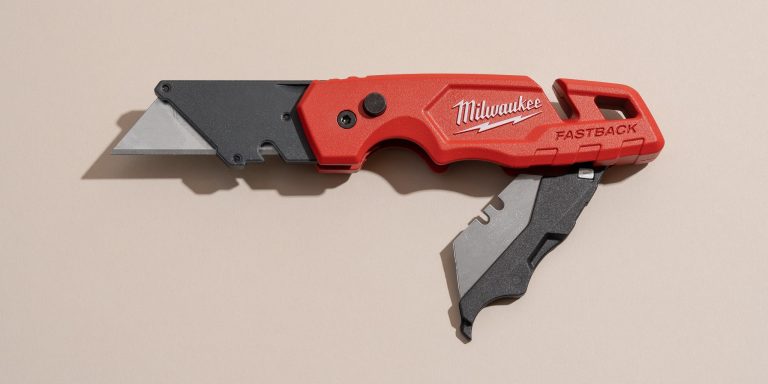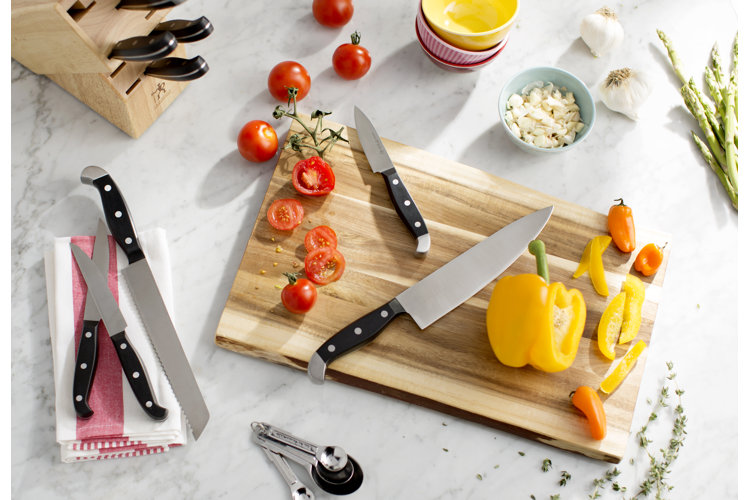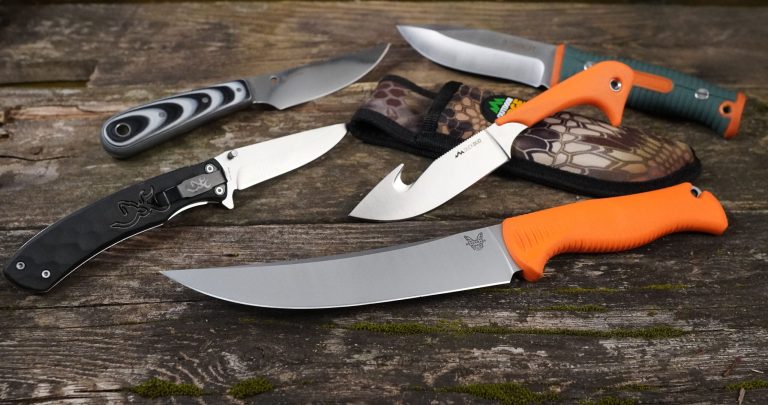Kiritsuke Vs Chef Knife Vs Santoku: Unleash the Cutting Power
Kiritsuke, chef knife, and santoku are all versatile and commonly used kitchen knives. Now, let’s dive into a detailed analysis of these three knives and understand their unique qualities, designs, and purposes.
In the culinary world, knives play a significant role in food preparation, making it essential to choose the right tool for the right task. Kiritsuke, chef knife, and santoku are three popular choices, each with distinct characteristics suited for specific requirements.
The kiritsuke knife, originating from Japan, boasts a long, single-edged blade with a flat spine. It combines the functionality of a gyuto and yanagi knife, suitable for both slicing and push-cutting techniques. On the other hand, the chef knife, widely used in Western cuisines, features a broad, double-beveled blade suitable for various slicing, dicing, and chopping tasks. Lastly, the santoku knife, also hailing from Japan, is appreciated for its shorter, wider blade with granton indentations, making it proficient in slicing, dicing, and mincing tasks. Now that we have a brief understanding of these three knives, let’s explore their unique features and how they differ in design and function.
The Evolution Of Kitchen Knives
The evolution of kitchen knives encompasses both traditional and modern styles. Among the traditional knives, we find the Kiritsuke, a multipurpose knife commonly used in Japanese cuisine. Its design allows for versatile slicing, dicing, and chopping. Then we have the renowned Chef Knife, also known as a cook’s knife, which excels in most culinary tasks. Finally, the Santoku knife, originating from Japan, offers a balanced approach with its shorter, wider blade perfect for precise chopping and mincing.
Advancements in blade technology have paved the way for modern kitchen knives. Cutting-edge materials like stainless steel, carbon steel, and ceramic are crucial factors influencing knife manufacturing today. Stainless steel knives are prized for their durability and resistance to rust, while carbon steel knives boast exceptional sharpness. Ceramic knives, on the other hand, are known for their lightweight and retention of sharpness.
| Traditional knives | Modern kitchen knives |
|---|---|
| Kiritsuke | Advancements in blade technology |
| Chef Knife | Materials used in knife manufacturing |
| Santoku |
Kiritsuke Knife: The Master’S Blade
Kiritsuke Knife: The Master’s BladeThe Kiritsuke knife is a true masterpiece that showcases the rich history and exquisite craftsmanship of Japanese cutlery. With its origins rooted in the samurai culture, this blade holds a special place in the hearts of culinary enthusiasts.
Combining versatility and functionality, the Kiritsuke features a distinctive blade shape and design. Its pointed tip allows for intricate cuts, while the flat edge excels at chopping and slicing. This multi-purpose knife is a must-have for professional chefs and seasoned home cooks alike.
Precision is at the core of the Kiritsuke’s design, making it perfect for achieving unrivaled slicing and dicing. Whether you’re preparing delicate sashimi or finely chopping herbs, this knife delivers exceptional performance.
| Benefits of the Kiritsuke Knife |
|---|
| Offers the precision of a chef knife and the versatility of a Santoku |
| Efficiently tackles a wide range of kitchen tasks |
| Blends centuries-old Japanese craftsmanship with modern functionality |
| Allows for intricate cuts and precise slicing |
| Perfect for professional chefs and home cooks with a penchant for excellence |
Chef Knife: The Workhorse Of The Kitchen
Chef Knife: The Workhorse of the Kitchen
A chef knife is considered the workhorse of the kitchen, serving as the go-to knife for chefs and home cooks alike. Its all-around performance makes it an essential tool for any culinary task.
The blade length and shape of a chef knife are carefully designed to offer versatility and efficiency. With a typically longer blade, it allows for swift and precise chopping, slicing, and dicing. The curved blade also enables a smooth rocking motion, making it suitable for various cutting techniques.
Whether you are mincing herbs, julienning vegetables, or trimming meat, a chef knife is your reliable companion. Its ergonomic handle and balanced weight make it comfortable to hold and maneuver, reducing fatigue during prolonged use.
| All-around performance | A chef knife excels in performing a wide range of kitchen tasks |
| Blade length and shape | The longer blade allows for efficient chopping, slicing, and dicing. The curved shape enables a rocking motion |
| Suitable for various cutting techniques | Perfect for mincing, julienning, and trimming, offering versatility in the kitchen |
Santoku Knife: The Japanese All-Purpose Knife
|
Santoku Knife: The Japanese All-Purpose Knife The Santoku knife is known for its versatility and adaptability, making it a jack-of-all-trades in the kitchen. It excels in a variety of tasks, including slicing, dicing, and chopping. With its wide blade and rounded tip, it provides exceptional control and precision. The Santoku knife’s blade design and features are worth highlighting. The blade is typically shorter and wider compared to a chef knife or Kiritsuke, providing a larger surface area for efficient cutting and reducing the risk of food sticking to the blade. The flat edge of the blade enhances the knife’s efficiency, allowing for swift chopping motions. It is essential to note that while the Santoku knife is highly versatile, it may not be the best choice for tasks such as carving or boning. For specialized tasks, a chef knife or Kiritsuke might be more suitable. |
Comparing The Cutting Power
| Blade shape and design | Kiritsuke | Chef Knife | Santoku |
|---|---|---|---|
| Performance and precision | Kiritsuke knives have a flat edge profile with a pointed tip, suitable for slicing and chopping with precision. | Chef knives have a curved edge, perfect for rocker chopping and slicing through various ingredients. | Santoku knives have a shorter, wider blade with a flat edge, providing more control and less chance of sticking. |
| Edge retention | Kiritsuke knives typically feature a harder steel, allowing for excellent edge retention, resulting in longer-lasting sharpness. | Chef knives may have varying edge retention depending on the specific brand and steel used. | Santoku knives often have softer steel, which may require more frequent sharpening to maintain optimal performance. |
| Ease of use | Kiritsuke knives require skill and experience due to their straighter edge and pointed tip. They are often favored by professional chefs. | Chef knives are versatile and easy to handle, suitable for both amateur cooks and professionals. | Santoku knives are user-friendly with their shorter, wider blade, allowing for comfortable and efficient cutting motions. |
| Control and balance | Kiritsuke knives provide good balance and control, but their longer length may require more dexterity. | Chef knives offer excellent balance and control, allowing for precise cuts and comfortable handling. | Santoku knives are well-balanced and easy to maneuver, providing control for various cutting techniques. |

Credit: dalstrong.com
Choosing The Right Knife For You
Choosing the Right Knife for You
When choosing a knife for your kitchen, it’s important to consider your cooking style, preferences, comfort, handling, and maintenance needs.
Cooking Style and Preferences
Consider the type of cuisine you enjoy preparing. Kiritsuke knives are versatile and excel at precise slicing, while chef knives are more multipurpose, suitable for chopping, dicing, and mincing. Santoku knives are great for precise cutting and feature a flatter edge, perfect for slicing vegetables.
Comfort and Handling
**Ensure a comfortable grip** by trying out different knife handles. Look for a knife with a handle that fits well in your hand, providing control and reducing fatigue. **Weight distribution** is also important, as a balanced knife helps maintain stability during use.
Maintenance and Care
**Consider the maintenance requirements** of each knife type. Kiritsuke and chef knives often require regular maintenance, including sharpening and honing, while Santoku knives tend to retain their sharpness for longer. **Choosing a knife material** that suits your maintenance habits, such as stainless steel or high-carbon steel, is crucial.
Ultimately, the right knife for you depends on your personal preferences and cooking needs. Take the time to **test different knives** and **feel their balance** in your hand. **Prioritize comfort and performance** while considering maintenance requirements. With the right knife by your side, your culinary adventures are sure to be a cut above the rest!
Conclusion
When it comes to choosing the right knife for your culinary endeavors, it can be overwhelming to decide between a kiritsuke, chef knife, or santoku. Each knife has its own unique features and benefits, making it important to understand their differences in order to make an informed decision.
The kiritsuke knife offers versatility and precision, allowing for seamless slicing and dicing. On the other hand, the chef knife provides a wider blade and a curved edge, making it perfect for chopping and mincing. Lastly, the santoku knife combines the best of both worlds with a shorter, wider blade and a straighter edge, giving you the ability to perform various tasks with ease.
Ultimately, the choice between kiritsuke, chef knife, or santoku depends on your personal preferences and cooking style. Whether you’re a professional chef or a home cook, investing in a high-quality knife will undoubtedly enhance your culinary experience and elevate your dishes to a whole new level.
So, take your time, explore your options, and choose the knife that feels right for you. Happy cooking!

